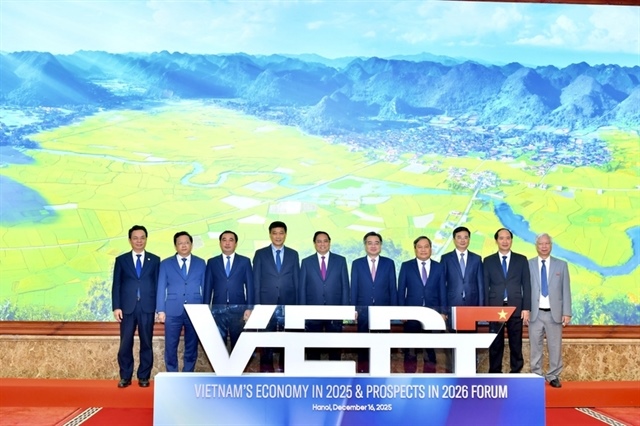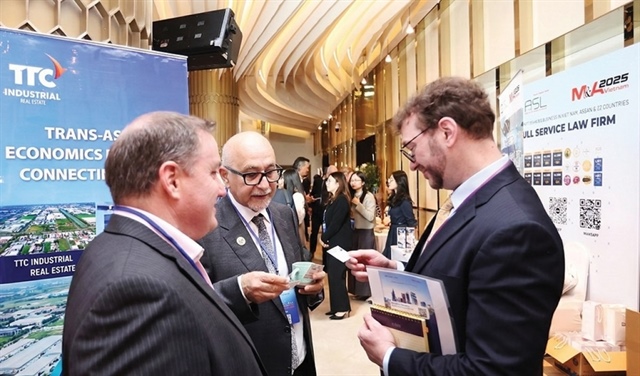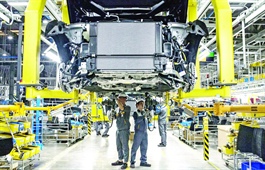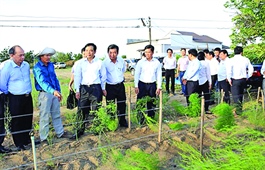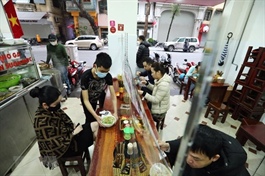Viet Nam attracts over US$15 billion of FDI in six months
Viet Nam attracts over US$15 billion of FDI in six months
Foreign investors have poured US$15.27 billion into Viet Nam so far this year, equivalent to 97.4 per cent of the amount recorded in the same period last year, according to the Ministry of Planning and Investment (MPI). 
The ministry reported that as of June 20, $9.55 billion had been injected into 804 newly-licensed projects, up 13.2 per cent year on year.
Meanwhile, $4.12 billion had been added into 460 underway projects, a year on year rise of 10.6 per cent. Foreign investors also poured $1.61 billion in share purchase deals in Viet Nam, according to the ministry.
Meanwhile, the disbursement of FDI in the period rose 6.8 per cent year on year to $9.24 billion.
Among the 18 sectors attracting FDI, manufacturing-processing lured the highest amount at $6.98 billion, accounting for 45.7 per cent of the total investment, followed by power production and distribution with $5.34 billion, making up nearly 35 per cent of the total investment.
Singapore leads the 80 countries and territories investing in Viet Nam with an investment of $5.64 billion, followed by Japan with $2.44 billion, and the Republic of Korea with $2.05 billion.
As of June 20, the country had hosted 33,787 FDI projects worth $397.89 billion in total, of which $241.1 billion, or 60 per cent, had been disbursed.
The export revenue of the foreign-invested sector has continued to rise at 32.2 per cent to $116 billion (including crude oil), accounting for 74.1 per cent of the country’s total export revenue. The sector’s revenue excluding crude oil reached $115.3 billion, up 32.6 per cent year on year.
The sector imported $102.6 billion worth of goods in the period, up 38.7 per cent year on year. As a result, in the first half of this year, it enjoyed a trade surplus of $13.4 billion including revenue from crude oil
The MPI also reported a trade deficit of $14.9 billion by domestic businesses.
The Vietnamese economy has fared better than most during the COVID-19 pandemic and is well placed to capture renewed FDI interest, according to an article posted on the UK website lexology.com on June 23.
The article said in recent years, the Vietnamese Government has focused on opening its market while also boosting its international trade ties. After joining the World Trade Organisation (WTO) in 2007 and many regional conventional trade agreement with the US, China, Europe, Japan, the Republic of Korea (RoK) and most of the significant economies in the world, the country has become a member of the “new era” global free trade agreements that form the biggest trading blocs of the world today such as the Comprehensive and Progressive Agreement for Trans-Pacific Partnership (CPTPP), the Regional Comprehensive Economic Partnership (RCEP) as well as free trade agreements with the European Union, Japan and the RoK.
It noted that Viet Nam’s position in the World Bank’s annual ease of doing business ratings has climbed from 91 out of 183 countries in 2010 to 70 out of 190 countries in 2019, adding that the country has also begun to look beyond low-tech manufacturing to high value added and high tech sectors of the new economy, industry 4.0 and digital transformation.
Aware of the ability to hold on to its competitive edge in the cheap manufacturing space is very limited, Viet Nam has thrown its weight behind high-value industries such as electronics and software engineering, positioning itself to capitalise upon the fourth industrial revolution.
The electronics industry is one of the country’s fastest-growing. The value of its electronics exports rose from $47.3 billion in 2015 to $96 billion in 2020, accounting for a third of national exports. In the global ranking of electronics exporters, Viet Nam has climbed from 47th place in 2001 to 12th place in 2019.
The article cited statistics of the Vietnamese Ministry of Industry and Trade data which showed that FDI firms accounted for 95 per cent of electronics export revenue in the first quarter of 2021. It affirmed that there is little reason to suspect that this trend will change in the coming years.
Viet Nam has committed to climbing the manufacturing value chain through FDI and has been working for years to upskill its population in preparation. The Vietnamese government’s economic and regulatory efforts will help drive FDI towards the Southeast Asian nation in the coming years, wrote the article.



